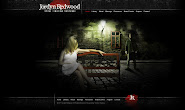I got this question in my blog comments and thought I would also provide the answer here.
Latedra asks:
How would they treat burns in children? I
imagine as they grow the burn scar would shrink right? My heroin received a burn as
a child and I write it like she still has this big burn that is a part of her life. Is that possible? Maybe I'm over thinking it. I'm just now taking her
burn seriously.
Jordyn Says:
Hi Latedra!
Thanks for leaving a question. It depends on what kind of burn you're talking about. Burns that need a higher level of care would be those that would inhibit function. We get concerned about burns that cover a large portion of the feet, hands, face or genitalia (including breasts). The larger the burn area or the deeper the burn-- the more it may require skin grafting to heal.
Let's take a simple burn. Red with some blisters but covers maybe a palm size of the thigh. We would wash it with mild soap and water. Apply a copious layer of triple antibiotic ointment. Then we put something over top that won't stick to it-- we use a Vaseline impregnated gauze called Adaptic-- then it won't stick as the dressing comes off. More extensive burns would be referred to a burn center.
Scars generally stay the same size. They don't grow as the child grows so it may appear that they are shrinking because the child is bigger but really they are the same size.
Hope this helps!
Hi Latedra!
Thanks for leaving a question. It depends on what kind of burn you're talking about. Burns that need a higher level of care would be those that would inhibit function. We get concerned about burns that cover a large portion of the feet, hands, face or genitalia (including breasts). The larger the burn area or the deeper the burn-- the more it may require skin grafting to heal.
Let's take a simple burn. Red with some blisters but covers maybe a palm size of the thigh. We would wash it with mild soap and water. Apply a copious layer of triple antibiotic ointment. Then we put something over top that won't stick to it-- we use a Vaseline impregnated gauze called Adaptic-- then it won't stick as the dressing comes off. More extensive burns would be referred to a burn center.
Scars generally stay the same size. They don't grow as the child grows so it may appear that they are shrinking because the child is bigger but really they are the same size.
Hope this helps!




























